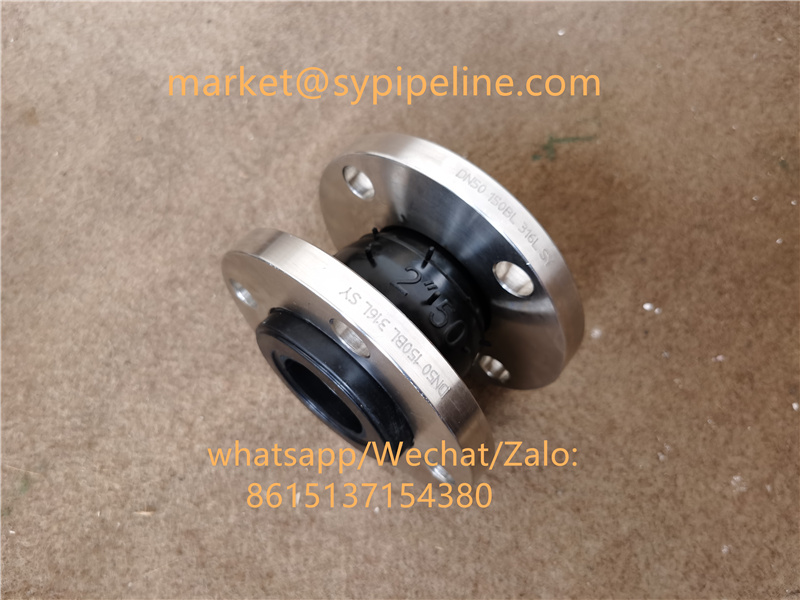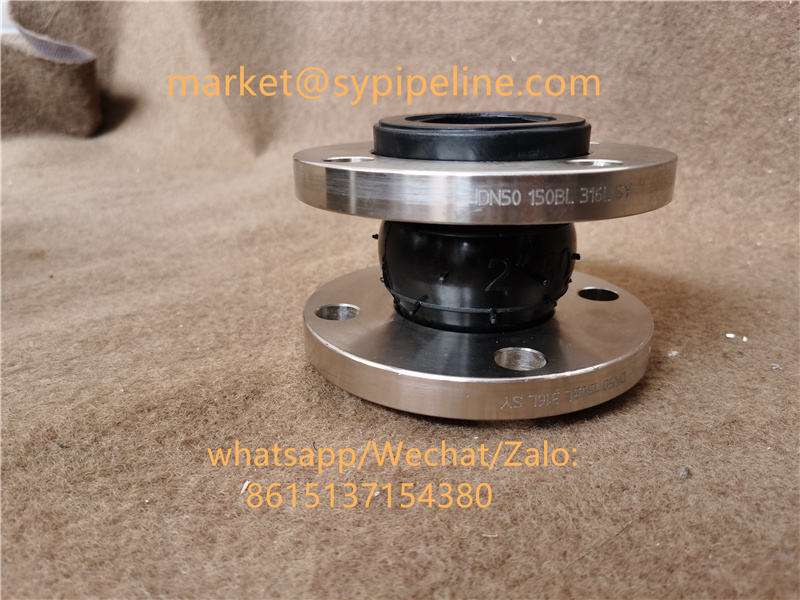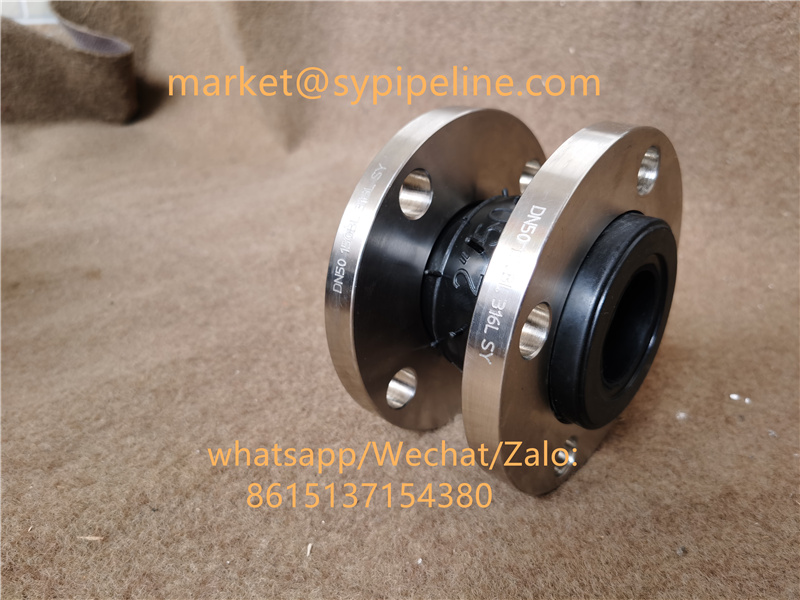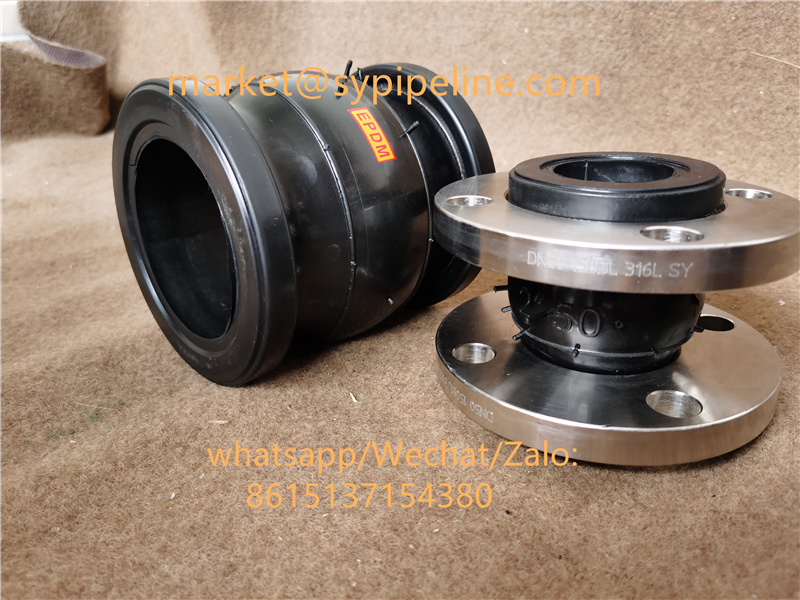

White food-grade rubber joints are mainly made of fluorine rubber into food rubber joints, which have passed the relevant national food contact rubber testing standards and reached food grade. Fluorine rubber is only divided into concentrated latex and solid standard rubber. Concentrated latex is a liquid substance processed by a high-speed centrifuge. A special barrel must be added to ammonia to keep it fresh. The dry rubber content is 60%; the solid standard rubber is coagulated, machined, The dried and packaged standard rubber is divided into several grades according to the content of impurities. It has international standards, and countries have corresponding standards. Our food-grade white rubber soft joints are produced in strict accordance with the national food-grade rubber standards and have no side effects on the human body.
Advantages: At the same time, fluorine rubber has the characteristics of high temperature resistance, oil resistance, high vacuum resistance, acid and alkali resistance, and a variety of chemicals.
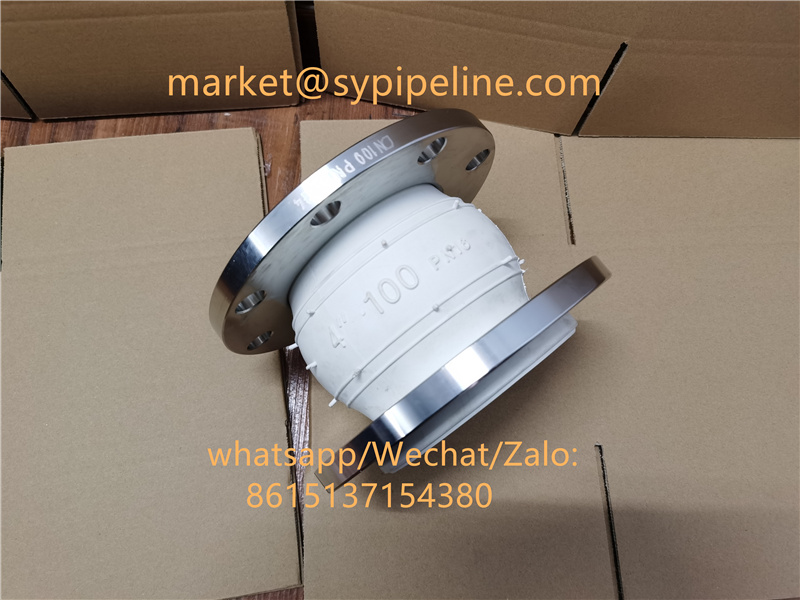
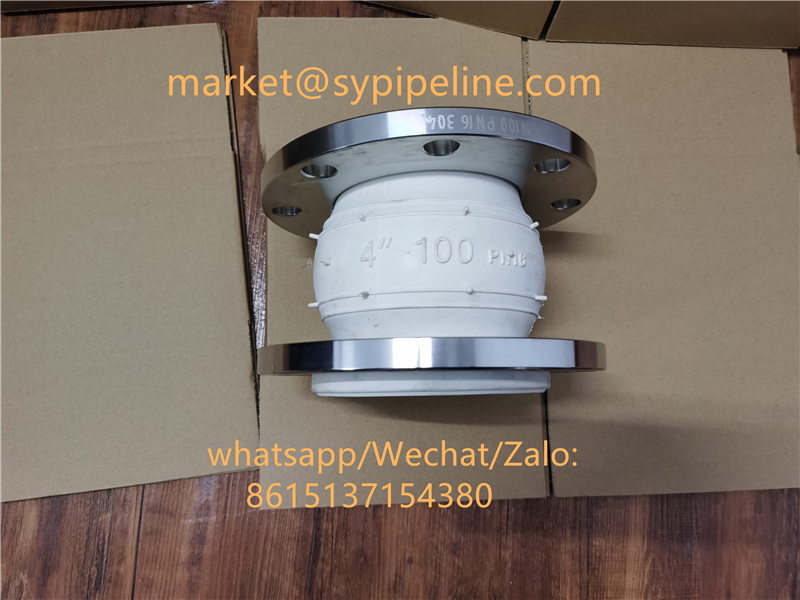
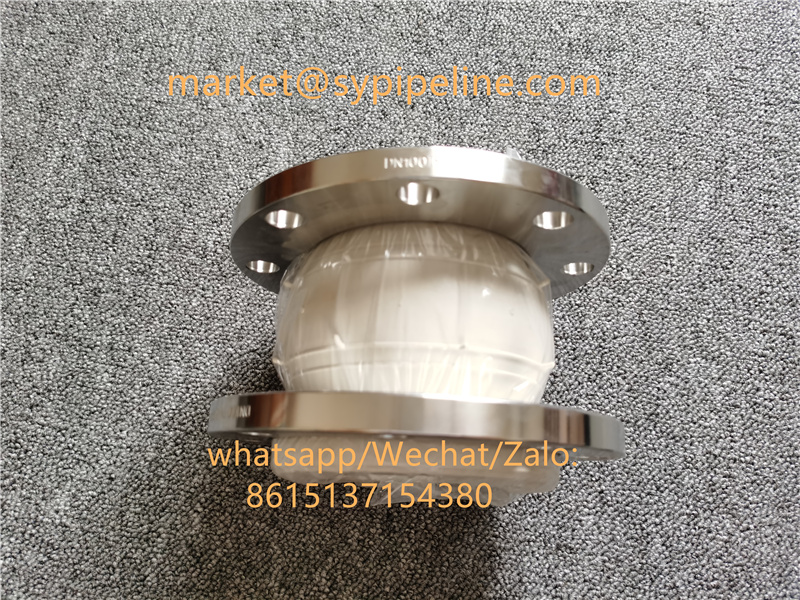


304L bellows expansion joint
Introduction
The 304L bellows expansion joint consists of a metal bellows and a member. It is a flexible, thin-walled, laterally corrugated, telescopic device.
The working principle of the bellows expansion joint is mainly to use its own elastic deformation function to compensate the axial, angular, lateral and combined displacement of the pipeline due to thermal deformation, mechanical deformation and various mechanical vibrations. The compensating function has the functions of pressure resistance, sealing, corrosion resistance, temperature resistant, shock resistance, vibration and noise reduction. It can reduce the deformation of pipeline and improve the service life of pipeline.
Features: light weight, simple structure, convenient installation and maintenance, large compensation
Attributes
[Nominal diameter]: DN32mm-DN1000mm
[Working pressure]: 0.6-2.5Mpa
[Working temperature]: -15℃to 300℃
[Connection method]: flange type
[Applicable medium]: water, steam, air, weak acid and alkali, oil, etc.
Advantage
1. Compensation for thermal expansion
2. No reverse thrust
3. Good high temperature resistance, corrosion resistance
4. Good sealing performance
5.Light body, simple structure, convenient installation and maintenance
6. Low price and excellent quality
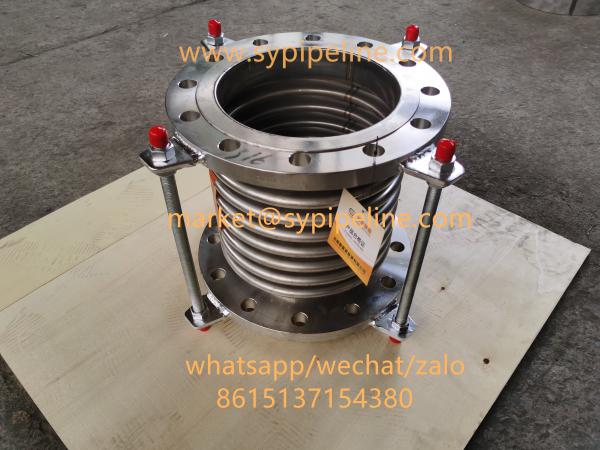
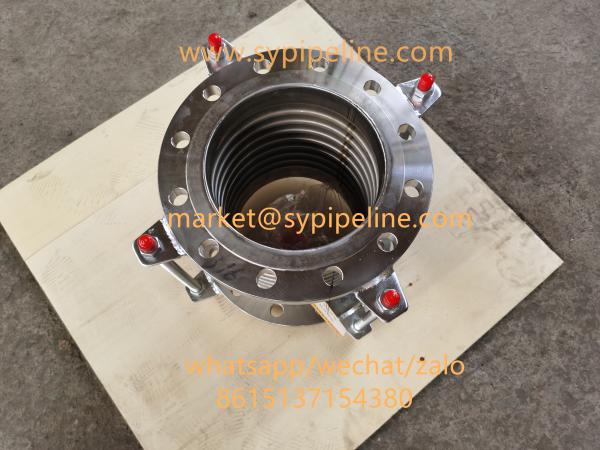
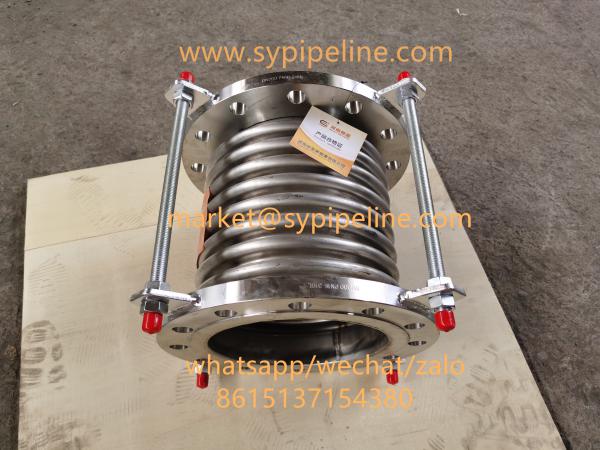
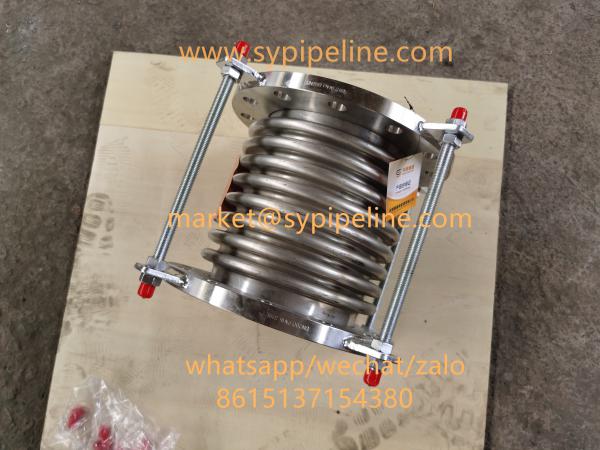

Rubber expansion joints are flexible connectors made of natural or synthetic elastomers and fabrics. Stainless steel flange rubber joints are widely used in pipelines with different pressures and media. Thermal growth, equipment movement, vibration or pressure fluctuation may cause movement in the pipeline system. When this motion is not absorbed by the pipeline system itself, stainless steel rubber joints are the perfect solution.
Features: vibration absorption, noise reduction, high pressure resistance, good elasticity, large displacement, balance pipe deviation, easy installation
Attributes:
Dimension: DN32mm-DN3000mm
Product pressure: 0.6-2.5 MPa
Product Material: NR, EPDM, NBR, KFM, PTFE, CR
Working temperature: - 40 degrees to 80 degrees (can also process high temperature resistant rubber joints)
Scope of application: acid, alkali, corrosion, oil, hot water, cold water, compressed air, compressed natural gas, etc.
Performance
Reducing Fatigue Coefficient
In view of the inherent characteristics of natural and synthetic elastomers, due to the steel and rubber interfaces of joints and flanges, they will not suffer from fatigue damage or embrittlement, and can prevent any electrolysis.
Excellent wear and corrosion resistance
A wide range of natural, synthetic and special purpose elastomers and fabrics can be used by the industry. Processing and assembling of materials to meet various actual pressure/temperature operating conditions, corrosive erosion, wear and erosion.
Minimum Face-to-Face Size while Absorbing Large Motion
Rubber expansion joints have the smallest face-to-face length, providing excellent movement in the direction of axial compression, axial extension and lateral deflection, as well as in the direction of angle and torsion.
Due to the inherent flexibility of rubber, spring stiffness is low.
The inherent flexibility of rubber expansion joints allows almost unlimited bending to recover from the imposed motion, requiring relatively small forces to move, thereby preventing damage to power equipment.
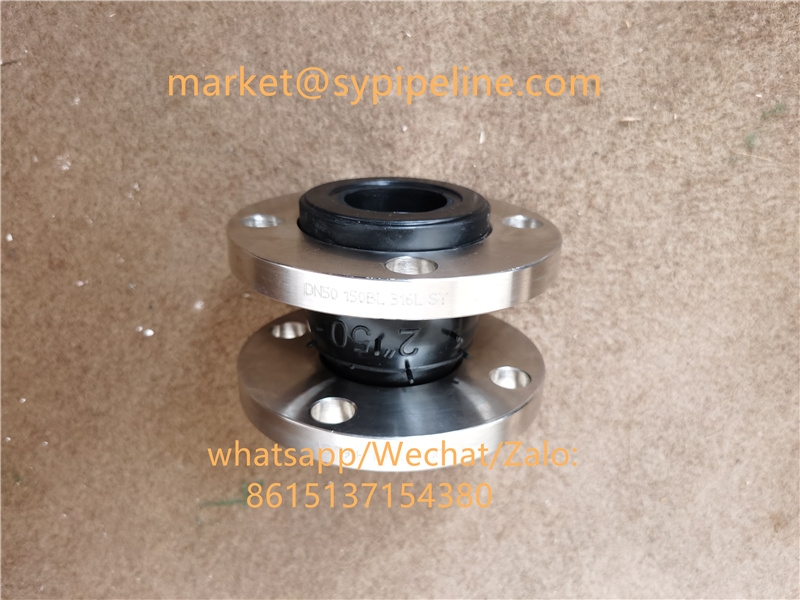
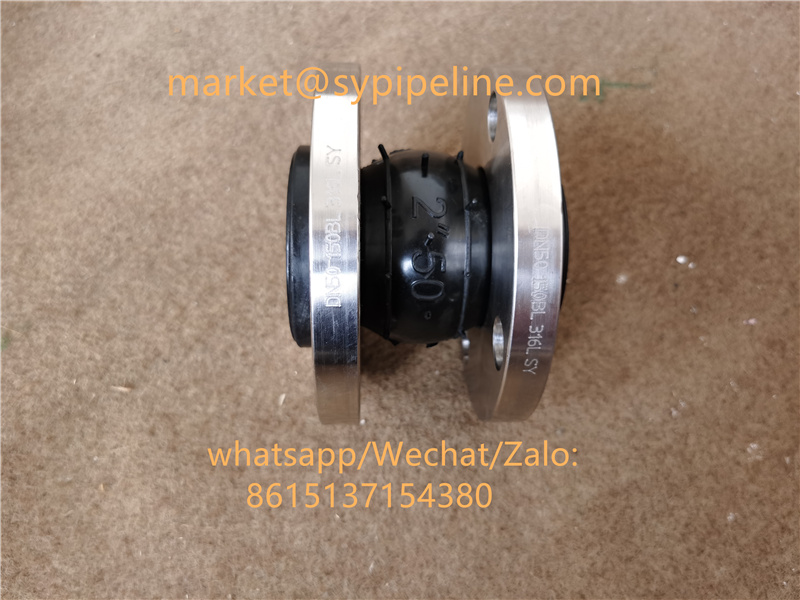
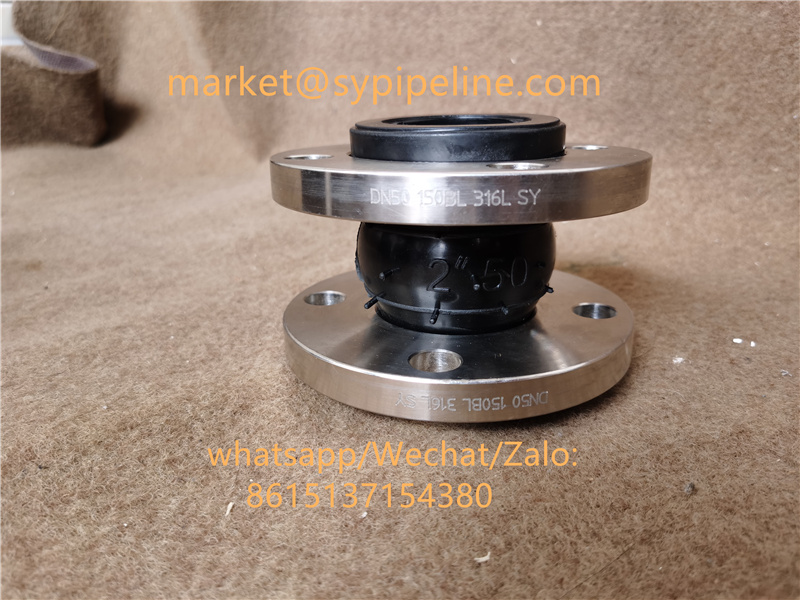
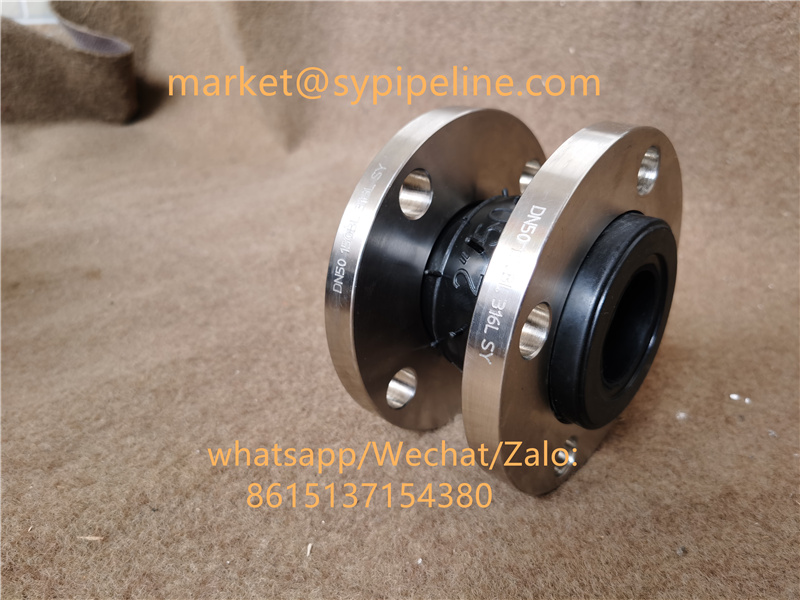

Metal braided hoses are mainly composed of bellows, mesh sleeves, flanges and joints. The inner tube is a thin-walled stainless steel bellows having a spiral or toroidal shape. The outer sleeve of the bellows is made of stainless steel or steel strip according to certain parameters. The joints or flanges at the ends of the hose are matched to the union flanges of the customer's piping. The metal hose is the main pressure-bearing part of the hose installed in the pressure line, and at the same time, the bellows is sheathed.
Features: corrosion resistance, high temperature resistance, high pressure and long life
2. Attributes
Size: DN8mm-DN400mm
Working pressure: 0.6~4.0MpaWorking temperature: -15 degrees to 200 degrees
Material: stainless steel, carbon steel
Connection method: flange type, groove type, loose type
Applicable medium: water, steam, air, weak acid and alkali, oil, etc.
Performance
Advantages
1. Flexible hose between pitches with small bending radius.
2, has good flexibility, no obstruction or stiffness.
3, the unit weight is light, the caliber consistency is good.
4, softness, repeated bending, and good flexibility.
5. Good corrosion resistance and high temperature resistance.
6, good wear resistance
Application
Due to the corrosion resistance, high temperature resistance and low temperature resistance of the metal hose (-196 ° C ~ 420 ° C), the weight is light, the volume is small, and the flexibility is good. Widely used in aviation, aerospace, petroleum, chemical, metallurgy, electric power, paper, wood, textile, construction, medicine, food, tobacco, transportation and other industries
Pipe installation stress
In complex piping systems, there are often difficulties due to space position conditions, resulting in installation difficulties: the formed pipe can not be loaded; bending over, coming over, making up the installed pipe will inevitably produce local Cold correction. Depending on the pipe diameter and the specific conditions on site, the amount of cold correction ranges from a few millimeters to tens of millimeters, and some hundreds of millimeters. Practice has proved that the larger the amount, the higher the internal stress, and the installation stress of these residues in the pipeline system is undoubtedly a great hidden danger.
Because the internal stress generated by bending and bending under the rated bending radius is very small, the metal hose can bring great convenience to the installation work, and also plays a certain role in ensuring the safe operation of the pipeline system. . This is the main reason why some piping systems must use metal hoses.
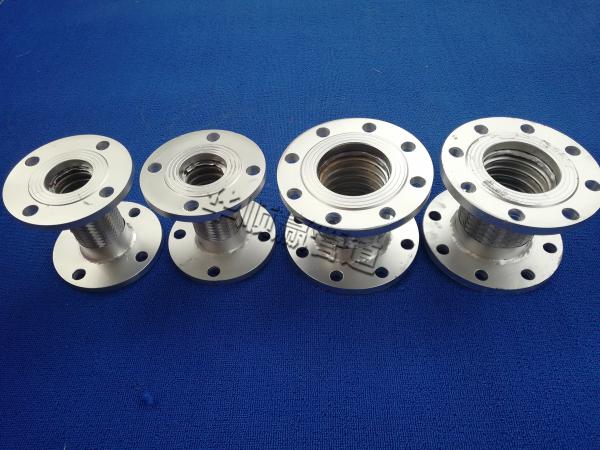
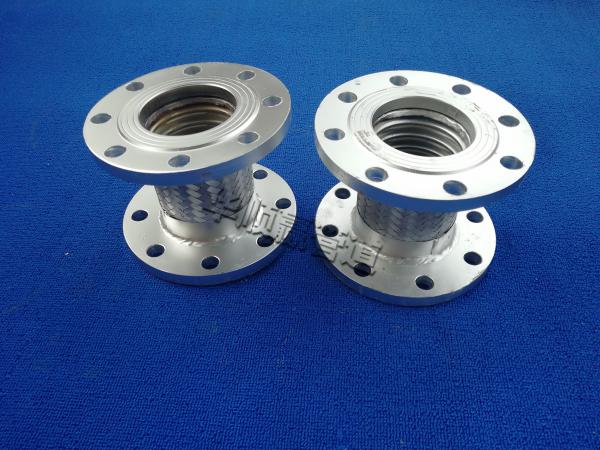
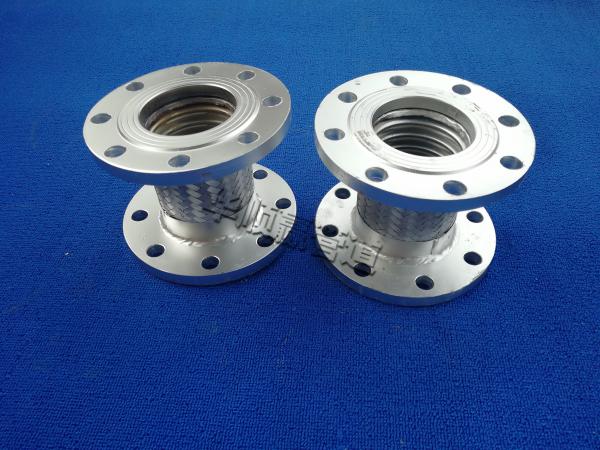
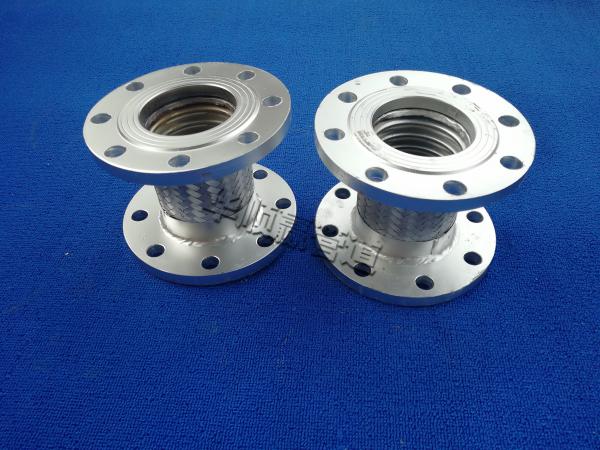

Metal bellows expansion joints
Introduction
Metal bellows expansion joints are also called metal bellows, metal expansion joints, or bellows Pump Connectors. It consists of bellows (a kind of elastic element) and the end pipes, brackets, flanges, pipes and other accessories that form the main body of its work. The metal expansion joint belongs to a compensation element.The metal expansion joint is mainly used to compensate for axial displacement and has the ability to compensate for angular displacement, but it is generally not used to compensate for angular displacement. Metal expansion bellows are compensating elements for thermal expansion and relative motion in pipes, vessels and machines. Absorption of axial, lateral, and angular displacement.
Features: simple design, easy installation, shock absorption and noise reduction
[Nominal diameter]: DN32mm-DN1000mm
[Working pressure]: 0.6-2.5Mpa
[Working temperature]: -15℃to 300℃
[Material]: 316L, 304L, 321, carbon steel
[Connection method]: flange type, welded type, groove type
[Applicable medium]: water, steam, air, weak acid and alkali, oil, etc.
Performance
Advantages
1. Compensate for axial, lateral and angular thermal deformation of the absorption pipe.
2. Absorb expansion of metal expansion joints, convenient for installation and disassembly of valve pipe.
3. Absorb equipment vibration and reduce the impact of equipment vibration on the pipeline.
4. Absorb the deformation of pipelines caused by earthquake and subsidence.
Application
Metal bellows expansion joints are used in a variety of applications and can be used over a range of temperature requirements, pressures and sizes.
The corrugated compensator uses the telescopic and offset of its main elastic component bellows to compensate the displacement of the pipeline, with large compensation and good elasticity.
Principle of axial movement of metal bellows expansion joint
The metal bellows expansion joint is considered to be the elongation or compression of the pipe system on its longitudinal axis, which means that the total length of the expansion joint will be extended or compressed during the absorption movement.An axial expansion joint designed to absorb large motions can contain one, two or more bellows in one unit, and can also achieve greater motion by pretensioning or by installing multiple expansion joints on the pipe section.According to the nominal diameter and length,the axial expansion joints can absorb small lateral and angular deviations as well as mounting tolerances. However, we recommend the use of the main function that should limit the axial expansion joint, otherwise its service life may be adversely affected.
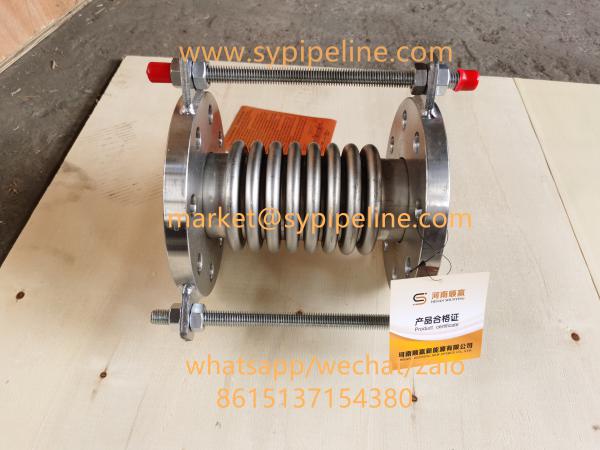
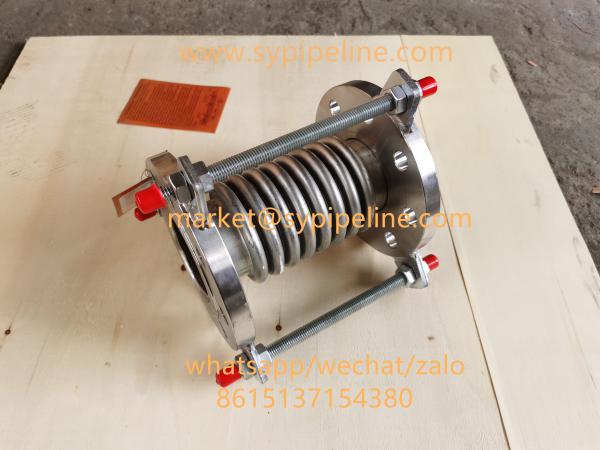
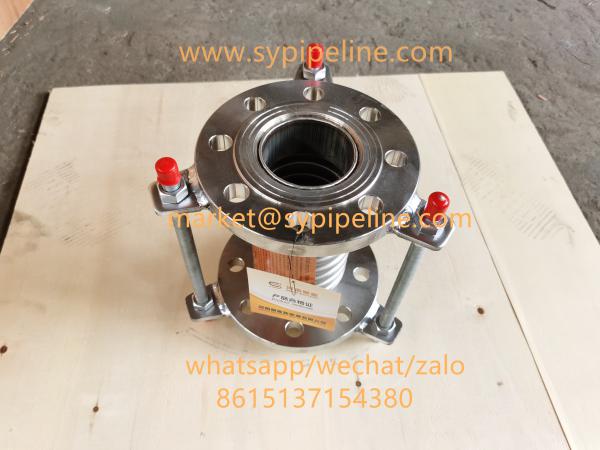
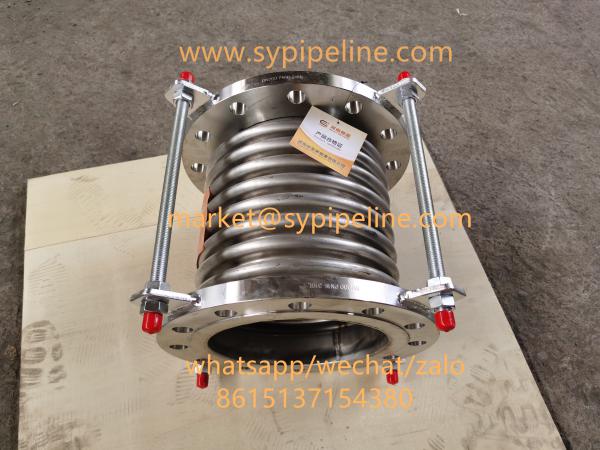

Rubber expansion joints are flexible connectors made of natural or synthetic elastomers and fabrics. Stainless steel flange rubber joints are widely used in pipelines with different pressures and media. Thermal growth, equipment movement, vibration or pressure fluctuation may cause movement in the pipeline system. When this motion is not absorbed by the pipeline system itself, stainless steel rubber joints are the perfect solution.
Features: vibration absorption, noise reduction, high pressure resistance, good elasticity, large displacement, balance pipe deviation, easy installation
Attributes:
Dimension: DN32mm-DN3000mm
Product pressure: 0.6-2.5 MPa
Product Material: NR, EPDM, NBR, KFM, PTFE, CR
Working temperature: - 40 degrees to 80 degrees (can also process high temperature resistant rubber joints)
Scope of application: acid, alkali, corrosion, oil, hot water, cold water, compressed air, compressed natural gas, etc.
Performance
Reducing Fatigue Coefficient
In view of the inherent characteristics of natural and synthetic elastomers, due to the steel and rubber interfaces of joints and flanges, they will not suffer from fatigue damage or embrittlement, and can prevent any electrolysis.
Excellent wear and corrosion resistance
A wide range of natural, synthetic and special purpose elastomers and fabrics can be used by the industry. Processing and assembling of materials to meet various actual pressure/temperature operating conditions, corrosive erosion, wear and erosion.
Minimum Face-to-Face Size while Absorbing Large Motion
Rubber expansion joints have the smallest face-to-face length, providing excellent movement in the direction of axial compression, axial extension and lateral deflection, as well as in the direction of angle and torsion.
Due to the inherent flexibility of rubber, spring stiffness is low.
The inherent flexibility of rubber expansion joints allows almost unlimited bending to recover from the imposed motion, requiring relatively small forces to move, thereby preventing damage to power equipment.
